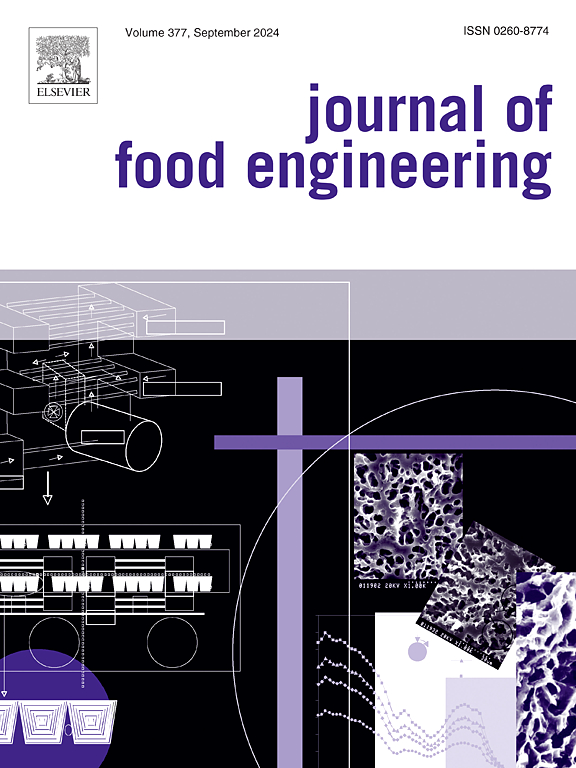胶囊化咖啡粉品质衰减动力学建模
IF 5.8
2区 农林科学
Q1 ENGINEERING, CHEMICAL
引用次数: 0
摘要
在生物塑料包装的咖啡粉的质量衰减动力学的完全预测模型是不可用的。因此,提出了一个新的模型来预测在恒温和相对湿度条件下储存的胶囊咖啡(用EGC表示)的质量衰减动力学。该模型假设一阶方程,其动力学常数依赖于水活度,可以用来描述EGC的质量衰减。为了预测胶囊内水活性随时间的变化,进行了胶囊内水的质量平衡。在23°C下进行具体测试以估计模型的参数。对咖啡粉进行了试验,以估计将动力学常数与水活度联系起来的参数;采用填充硅胶的胶囊,测定水渗透系数与胶囊内外水活度的关系。测定了咖啡粉在23℃时的吸水等温线。通过监测pH作为可靠的质量描述符来测量EGC的质量衰减动力学,并用于评估模型预测的准确性。结果表明,尽管提出了许多假设来推导新模型,但其预测EGC质量衰变动力学的能力是相当可以接受的。本文章由计算机程序翻译,如有差异,请以英文原文为准。
Modeling the quality decay kinetic of encapsulated ground coffee
A fully predictive model for quality decay kinetic of ground coffee packaged in bioplastics is not available today. Therefore, a new model is proposed to predict the kinetics of quality decay of encapsulated ground coffee (indicated as EGC), stored under constant temperature and relative humidity conditions. The proposed model assumed that a first-order type equation, with a kinetic constant dependent on water activity, can be used to describe the quality decay of EGC. To predict the variation of water activity inside the capsule over time, the mass balance of the water inside the capsule was carried out. Specific tests were conducted at 23 °C to estimate the model's parameters. Tests on ground coffee were run to estimate the parameters used to relate the kinetic constant to the water activity; the capsule filled with silica gel was used to determine the dependence of water permeability coefficient on the water activity inside and outside the capsule. The ground coffee water sorption isotherm at 23 °C was also determined. The quality decay kinetic of EGC was measured by monitoring the pH as reliable quality descriptor and it was used to assess the goodness of the model prediction. Results indicated that notwithstanding the numerous assumptions made to derive the new model, its ability to predict the quality decay kinetic of EGC is quite acceptable.
求助全文
通过发布文献求助,成功后即可免费获取论文全文。
去求助
来源期刊

Journal of Food Engineering
工程技术-工程:化工
CiteScore
11.80
自引率
5.50%
发文量
275
审稿时长
24 days
期刊介绍:
The journal publishes original research and review papers on any subject at the interface between food and engineering, particularly those of relevance to industry, including:
Engineering properties of foods, food physics and physical chemistry; processing, measurement, control, packaging, storage and distribution; engineering aspects of the design and production of novel foods and of food service and catering; design and operation of food processes, plant and equipment; economics of food engineering, including the economics of alternative processes.
Accounts of food engineering achievements are of particular value.
 求助内容:
求助内容: 应助结果提醒方式:
应助结果提醒方式:


